2009 GAMES ARCHIVES
12-19-09: Half-Life 2--Episode 2 Review (XBox 360)
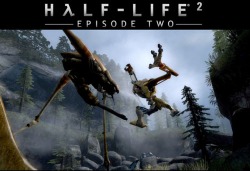
Bittersweet. That is how I would sum up my feelings toward “Half-Life 2: Episode Two” in one word. But one word wouldn’t do this game justice, so let me expand on that. “Episode Two” is the defining chapter of what is, in my mind, the best shooter ever made.
“Episode Two” continues the story of scientist Gordon Freeman’s battle against the alien Combine that have taken over the earth. Gordon and his companion Alyx are trying to make their way to White Forest, a resistance base that houses a rocket the rebels plan to use to close the gigantic portal through which the Combine plan to bring their entire army to Earth. I won’t spoil the details for anyone who hasn’t played it, but let’s just say there is plenty of story left to be told when “Episode Three” finally arrives.
What makes “Episode Two” (and the “Half-Life 2” series in general) great is that Valve never overuses anything. The game is constantly balancing the presence and absence of several elements to shape the player’s experience. A good example would be the use of sound in the game. For much of the game, the ambient sounds of the environment, or the sounds of Gordon interacting with it, are all that you hear. Music is used very sparingly in the game overall. So when a big action sequence is accompanied by music, you actually notice it, and it fits perfectly with the scene. Similarly, the action/shooting elements of the game are perfectly balanced with the puzzle solving elements of the game. The game will stress you out then bring you down—it has a rhythm to it that keeps you engaged by never burning you out on one aspect of the experience.
From a storytelling standpoint, I have never played another game that presents its story as well as “Half-Life 2” does. Nevermind the fact that that it’s a shooter, a genre that is known for its terrible storytelling. This game has a better narrative than most RPGs, and because you’re immersed in the first-person perspective, you feel closer to what’s going on. By the time Episode Two ends, you are so invested in the characters and their plight that it’s excruciating to know the rest of the story may not be coming for a while. Therein lies the bittersweet feeling I had when finally finishing “Episode Two.” I was happy to have completed that portion of the story, but immediately sad that it was over. Very rarely does that happen to me with a video game.
“Half-Life 2” came out in 2004, followed by “Episode One” in 2006 and “Episode Two” in 2007. We are approaching 2010, and there’s no clear indication of when we’ll get “Episode Three.” However, at least I’ll have time to play through the original “Half-Life” as well as the “Half-Life 2” games all over again before the next installment comes out.
5 out of 5 Masterpieces
If you’ve never experienced these games, I implore you to check them out. You can grab the original Half-Life on Steam for $10, and the “orange Box” for PS3 and Xbox 360 contains “Half-Life 2” as well as both expansions and two other games (Team Fortress 2 and Portal) for around $20.
12-17-09: Saints Row 2 Review (XBox 360)
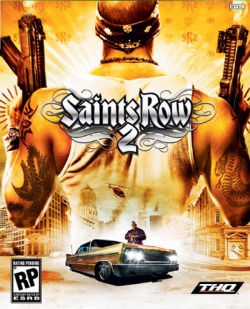
Oh “Saints Row 2,” how I love thee.
“Saints Row 2” is an insanely fun romp through what can only be described as the greatest B-movie of all time. The story picks up five years after the original “Saints Row,” which ended with the main character in a coma. Here you wake up in prison, and the plastic surgery you had to have allows you to customize your character to look like whatever you want. From there, you escape from prison, meet up with some of your old crew, and begin taking back the city from the three rival gangs that have moved in: The Samedi (voodoo guys), The Ronin (samurai dudes) and the Brotherhood (kind of a ‘Hell’s Angels’ knockoff). In addition to the gangs, there’s also the Ultor Corporation, led by CEO Dane Vogel, who is really the power player behind everything in Stilwater.
“Saints Row 2” is all about playing the way you want to play. There are three main storylines that are intertwined with you taking on the three rival gangs. You can approach them any way you want and in any order. As you play through the storylines, the details of what happened in your absence are revealed, and you get to see the inner workings of each rival gang. Completing missions allows you to reclaim neighborhoods across the city, which brings in income for the Saints. You can also buy businesses in the neighborhoods you own, which will give you discounts when buying things like weapons and ammo.
The general gameplay includes third-person shooting, melee combat and driving vehicles, which range from golf carts to jet skis to helicopters. When you’re not playing missions for the main storyline, you can engage in ‘Activities’ and ‘Diversions’ like base jumping, taxi driving, vandalism, stunt driving, and about a dozen others. Completing these earns you money and respect, which unlock story missions. To aid you in all of your endeavors is a wide array of weapons and vehicles. Every time you take down an enemy or steal a car, you can bring it back to your own base and make it part of your collection. It doesn’t take long to build up quite an arsenal. Anything you don’t pick up off an enemy can usually be bought at one of the stores in Stilwater. I found myself using the samurai sword as my main melee weapon, and dual-wielding sub machine guns as my ranged weapon of choice. You can also bare-knuckle it, and there are fighting styles you can adopt that include finishing moves, when you just want to duke it out with someone. Again, it’s all about how you want to play.
The city of Stilwater itself is pretty expansive, and it feels alive, with plenty of traffic and civilians on the streets at any given place and time. From nightclubs to college campuses to shorelines, there’s a ton of variety in Stilwater. You can also purchase ‘cribs’ around the city, so once you find a setting you like, you can set up shop there.
I could go on and on, but the point is that there’s so much to do and see in Saints Row 2, that you’ll spend dozens of hours taking it all in. Anyone who dismisses this game as a “Grand Theft Auto” clone is really missing out. I think it’s actually better than “GTA,” because it keeps all the fun parts of the formula, and gets rid of all the boring parts. “Saints Row 2” also doesn’t take itself too seriously; a mistake “GTA IV” made that really affected how much fun you could have with it. The shooting and driving in “Saints Row 2” is also better than “GTA IV’s” in my opinion.
Lots of options, lots of laughs, lots of fun. That’s how I’d sum up “Saints Row 2.” I would highly recommend it.
5 out of 5 Samurai Swords To The Chin
You can now get "Saints Row 2" for $19.99 at retail, or you download the game On Xbox Live’s “Games on Demand” for $29.99.
12-12-09: Jurassic: The Hunted Review (Wii)
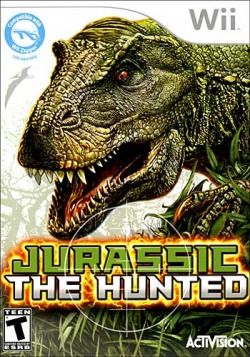
“Jurassic: The Hunted” is a first-person shooter that puts you in the role of Craig Dylan, a mercenary who is serving as a bodyguard for a research team that is investigating some strange energy readings coming from a remote island. As the team is flying to the island in the beginning of the game, the plane is caught in some sort of a time storm. The crew and their supplies are scattered all over the island, and Dylan must make his way back to the rest of his team. Sounds fairly straightforward, right? Oh, I forgot to mention—the island is teeming with DINOSAURS. It seems that the strange temporal events actually brought Dylan back in time.
As both a comic and B-movie fan, the story of “Jurassic: The Hunted” appealed to me in that “Monster Island meets SyFy Original Movie” sort of way. The voice acting is decent, and Dylan has a kind of charm to him. In fact, he takes the whole dinosaur thing in stride—not that he has a lot of time to think about it, with the dinos trying to kill him and all.
The game uses the CloakNT engine, which is a version of the engine developer Cauldron HQ has used in games like “Chaser,” “Civil War: A Nation Divided” and “Cabella’s Big Game Hunter 2010.” From a mechanical standpoint, I felt the shooting performed better than some of the bigger name FPS games that have shown up on the Wii over the past year or so. While you can use the Wii Zapper or other gun peripherals, I used the Wiimote and Nunchuck and had no problems at all. The Wiimote moves your crosshairs, flicking the Nunchuck throws grenades and a push of the ‘-‘ button lets you use “Adrenaline,” which slows down time and highlights a dino’s most vulnerable areas. The gameplay generally consists of fighting off either packs of smaller dinosaurs or one larger one at a time. There are places in the game where you need to hole up in a makeshift fort and defend yourself from the swarming dinos that are trying to get in. Similarly to the zombie mode in “Call of Duty: World at War,” you can actually repair the windows in your fort by holding down a button in between fighting the dinos. The fort-defending element provides a nice change to the more linear parts of the levels..
I hate complaining about graphics in Wii games, but the fact of the matter is that “Jurassic: The Hunted” on Wii looks like a much lower-res version of the PS3 and Xbox 360 games. The main problem with the graphics is that the backgrounds blend together and it's difficult to make out everything from enemies to even the basic path you're supposed to follow. A decent checkpoint system does help matters a little, but more than a few times I died because I just couldn't see what was going on.
Another place I felt the game missed the mark with the potential younger audience the game could have had. If you took out the blood and replaced the bullets with tranquilizer darts, Activision could have marketed this game toward a younger audience. And let’s face it, what kid doesn’t like dinosaurs? It just seems like a missed opportunity, especially for the Wii platform.
Overall though, “Jurassic: The Hunted” is a fun game that has solid mechanics and campy storyline B-movie fans will get a kick out of. If you’re sick of shooters filled with space marines and political conspiracies, give “Jurassic: The Hunted” a shot.
3 out of 5 Temporal Storms
It also bears mentioning that "Jurassic: The Hunted" carries a price tag of $39.99, ten bucks cheaper than most Wii games, so it's a little easier on the wallet.
12-2-09: Left 4 Dead 2 Review (XBox 360)
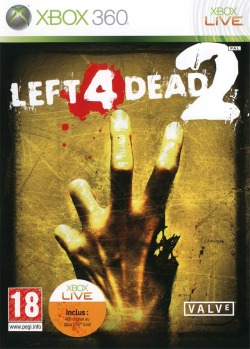
“Left 4 Dead 2” is one of the few sequels I’ve played that manages to improve upon its predecessor in every possible way. It’s so good that not only is it worthy of being called a true sequel, but it may just make you forget about the original.
The game’s story is set in the South this time around, moving from Savannah, Georgia to New Orleans, Louisiana over the course of the game. Like the first game, an epidemic of a rabies-like infection has turned most of the population into crazy, zombie like mutants. Four survivors band together to try and make it out of the infected area alive.
What I immediately loved about “L4D2” is the improvements to both story and characters. The overarching story links the five campaigns together this time around, which makes the whole game feel like a giant, epic zombie miniseries. The characters are fantastic as well, and the dialogue is much richer than in the first game. Each of the four characters—Coach (a high school football coach), Rochelle (a TV production assistant), Nick (a con man) and Ellis (a mechanic)—have their own personality and charm, with Ellis being the standout, as everything that the survivors experience reminds him of a story that involves one of his friends or relatives. I had several laugh out loud moments with the random dialogue that comes for the characters.
The enemies have gotten better this time around, too. In addition to the special infected from the last game, “L4D2” introduces several new enemies to the mix. The Spitter hurls acidic phlegm at the characters that pools on the ground can caused damage to anyone who touches it; the Charger has an oversized arm that he uses to bash characters into the ground after bowling them over; the Jockey is a little person that jumps on your back and steers you toward other zombies, and the Witches from the first game now get up and wander around, creating a whole new level of tension. There’s also “uncommon” infected now, like a clown whose squeaky shoes alert other zombies, and “mud men,” who jump up from the bottom of the swamp and obscure your vision with mud, leaving you more groping around, getting pummeled by zombies.
The gameplay in “L4D2” has received a substantial upgrade with the addition of melee weapons. Chainsaws, katanas, axes, bats and frying pans can be used to slice, dice and bash zombies. You can also use adrenaline shots to give you a speed burst when you need it the most, and a defibrillator to bring a fallen teammate back to the land of the living. The variety of choices you now have results in new strengths and weaknesses in your group. For example, while running to a helicopter at the end of one campaign, I was swarmed. My teammate, who was already in the escape helicopter, couldn’t help me because he had traded his pistol for a melee weapon. He watched me die as the helicopter took off.
Did I mention the game also CHANGES EVERY TIME YOU PLAY IT? The AI Director not only spawns enemies differently each time, but it now has the ability to change the physical layout of the level, so a path that was there the last time you played through could end in a brick wall this time around. Weather and lighting can also change during a playthrough. These new additions really do make the game feel different each time you play, and every time you take a wrong turn down a path you thought was the right way, you have to begrudgingly give pops to the developers for keeping you on your toes.
I could go on with the list of changes, but you get the point. “L4D2” is very different from last year’s game, and all of those differences are for the better. Valve took an incredibly entertaining cooperative game and built on the strengths of it, while adding more variety and more reasons to keep coming back to it. I will gladly hand over $60 a year if this is the type of innovation I can look forward to in the franchise.
5 out of 5 Midnight Riders
11-30-09: Call of Duty: Modern Warfare 2 Review (XBox 360)
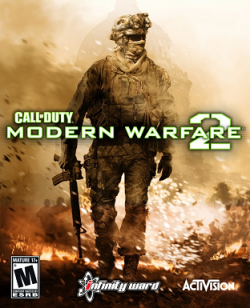
“Call of Duty: Modern Warfare 2” offers an action movie-like single player campaign, bite-size cooperative missions, and one of the most full-featured multiplayer modes of any game this generation. While I feel the developers made a few missteps here and there, it’s a blast to play and certainly met my expectations as a sequel to one of the best games of all time.
The campaign in “Modern Warfare 2” picks up five years after the original, and the Soviet Ultranationalist you killed in the first game (Zakhaev) has been replaced by a new guy (Makarov) that’s just as crazy as his predecessor. You take on the roles of a few of the people who are trying to take down Makarov, and the campaign jumps to different missions that are taking place around the world as the story unfolds. Much like the first “Modern Warfare,” the campaign is a well-paced roller coaster, never slowing down enough for you to become bored with it or become focused on the holes in the story. It felt like I was playing through a season of “24,” especially since there’s a good portion of the story takes place on U.S. soil. Sure, the story is completely over the top at times, but that’s exactly what I was hoping for. The voice acting is superb, with Keith David and Lance Henriksen being the standouts for me.
As much as I don’t want to discuss it, there is a controversial level in the game that I would be remiss without mentioning. Early in the game, you are put in the role of an undercover U.S. agent who has to take part in an act of terrorism in order to keep his cover. The point of putting you in this situation was to show you how far ‘the good guys’ sometimes have to go for the greater good. In this case, maintaining your cover could result in saving millions of lives, which outweighs the few hundred who are going to perish through the act of terrorism you are committing. There are many in the gaming community who were offended by this. I did not find the level offensive, just poorly executed. Outside of the initial shock value, it wasn’t particularly effective, and what happens at the end of the level works against what the developers were trying to accomplish. In any case, I give kudos to Infinity Ward for taking a risk with their storytelling, and hope that the backlash won’t discourage future attempts.
The ‘Special Ops’ mode of the game is a cooperative mode that puts two players in a variety of scenarios. Some play out like a horde mode, where you just battle waves of enemies, and some have specific objectives that need to be completed. This is a nice addition, especially since the campaign does not have co-op.
Multiplayer retains the core of what made the first Modern Warfare great, with a variety of maps and game modes, and a leveling system that has you unlocking perks, weapons and add-ons with the experience you gain from playing. However, the ‘kitchen sink’ approach Infinity Ward has used this time around is almost too much. There’s a constant stream of in-game rewards that are flashing in front of you while playing, and the fact that you can have multiple deployables (like jets and attack helicopters) active at the same time can unbalance a match very quickly. The biggest disappointment in multiplayer though, is the fact that most game modes do not allow Xbox Live party chat. This means you have join the in-game chat and be subjected to the racist and homophobic rantings of every 10-year old whose mom decided to buy a mature-rated game for them. It really sucks the fun out of an otherwise great experience.
So while it’s not perfect, Modern Warfare 2 is still one of the best games of the year, and I’ll be playing it for months to come. I had so much fun with the single player campaign that I’ll be going through it again, and I may even go back and play the campaign from the previous Modern Warfare. Highly recommended.
4.5 out of 5 Price and Soap Need Their Own Spin-Offs
11-27-09: Borderlands Review (XBox 360)
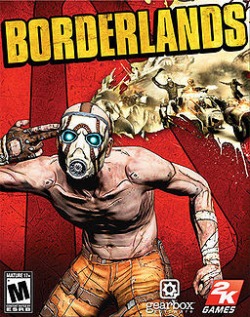
“Borderlands” is a fun and addictive hybrid of the FPS and RPG genres that is almost impossible to put down. The game has its flaws, but it does so much right that the flaws don’t get in the way of the overall experience.
The world of “Borderlands” is very ‘Mad Max,’ and the story takes place on a planet called Pandora that was the sight of a gold rush years ago. People flocked to Pandora and its rumored riches of mineral resources, only to find a barren and harsh land that proved difficult to survive in. Everyone that could afford to left Pandora, and many of those who are there now are eking out a meager existence. There are still some fortune hunters though, and for them, the holy grail of Pandora is the Vault—a horde of treasure and alien artifacts that every mercenary and treasure hound is looking for. Players take on the role of an adventurer who is also seeking fame and fortune, and gets caught up in the mix of parties looking to unlock the Vault.
Players choose from one of four classes: the Siren (rogue), the Soldier (fighter), the Hunter (ranger) and the Berserker (barbarian). Each class plays differently, and as you upgrade your character, there are plenty of variations within each class to your character to the way you like to play. From there, it’s pretty standard stuff—you take on quests, you get loot and experience, you upgrade your character, and you advance the story.
The three things that “Borderlands” nails as a game are the shooter elements, the loot system and the multiplayer. The controls are tight, and weapon classes feel different enough from each other that most players will end up carrying something of each type. The loot system is right out of “Diablo,” with found items being color-coded to signify their rarity. Each encounter brings the potential of a rare item, so there’s always incentive to dive back into combat and hope for that one super-rare item that will give you a huge advantage.
Multiplayer is flat out amazing. At any time, you can invite up to three friends into your game. The transition is seamless, and the game ramps up the amount of enemies and the difficulty to match the number of players. Best of all, any experience and loot you earn in another person’s game comes back with you to your own game. You can also complete quests in other people’s games and get credit for them in your own game. This is where the multiplayer shines, as you can call in a few buddies to help you complete a particularly hard quest, and when they leave again your difficulty goes back to where it was before. It’s quite simply the best implementation of cooperative play I’ve seen in a console game.
Where “Borderlands” doesn’t quite hit the mark is in the RPG department. The character creation tools are almost non-existent, and the storyline is pretty thin. The game is not so much a hybrid as a shooter with some light RPG elements. I would love to see Gearbox beef up the RPG side of things next time around, as it would be scary to think of how good the game would be if it truly achieved a 50/50 RPG/shooter split.
In the end, “Borderlands” gets right a lot more than it gets wrong, and everyone should at least give it a try for the multiplayer alone. Between that and the addictive nature of the loot system, I’ll be revisiting Pandora quite a few times over the next several months.
4.5 out of 5 Loot Drops
11-17-09: Star Wars The Force Unleashed: Ultimate Sith Edition Review (PC)
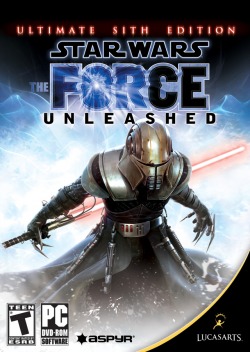
2008's “Star Wars The Force Unleashed” was a huge commercial success, selling over six million copies world. Set in the time period between the two movie trilogies, “The Force Unleashed” put players in the role of Darth Vader's apprentice Starkiller, who Vader uses as a pawn in his bid to usurp the Emperor and ferret out enemies of the Empire. The choices that players make throughout the game determine the ultimate fate of the apprentice and Vader's plans. “The Force Unleashed's” storyline was well received by critics and fans, and considered to be the game's greatest strength. Last October Secret Identity contributor Armand Nadeau reviewed the original game, giving a 3.5 out of 5 (scroll down the page to find his full review). While Army loved the story, he thought the game had its share of problems, citing camera and framerate issues, as well as some questionable AI.
On November 3rd, “Star Wars The Force Unleashed: Ultimate Sith Edition” hit shelves for the PC, PS3 and Xbox 360. This is the first time that PC owners have gotten a chance to experience the game, and in addition to the original game, “Ultimate Sith Edition” has three new missions that take the apprentice to Coruscant, Tatooine and the ice planet of Hoth. It’s this Hoth level that’s new for all versions of the game, as the two other missions were released via DLC a while back. Anyway, it’s all new for the PC version, which is what I spent time with this past week.
What I love about the new missions is that you don’t have to play through the original game to unlock them. All three missions are available from the get go, and in them you play as a fully powered-up version of Starkiller.
The Coruscant mission sees the apprentice visit a Jedi temple in search of information on his father. After battling through most of the temple, Starkiller sees a vision of his father, engages in some Jedi trials and must fight an alternate version of himself, signifying his battle with both sides of himself. While it was cool to explore the temple, the puzzle aspect of the Jedi trials was a bit frustrating. The trials require you to move glowing orbs along a very specific path, and the controls when using the force grip are just not that articulate. One puzzle in particular took me several attempts before I finally completed it, and I felt it was more luck than skill that carried me through it.
For me, the real draw to the “Ultimate Sith Edition” was the “Infinities” storyline that is comprised of the other two bonus missions. These missions are sort of a “what if?” type scenario. The basic premise is that Starkiller actually killed Darth Vader and is now the Emperor’s right hand Sith. Starkiller travels to Tatooine and Jabba’s palace to try and locate Obi-Wan Kenobi. Of course, Jabba is less than helpful, and Starkiller has to battle his minions as well as a Rancor before escaping and heading to the Mos Eisley cantina for a showdown with Obi-Wan. From there, he tracks the Millennium Falcon to the secret Rebel base on Hoth, which ultimately ends in a showdown with Luke Skywalker. I loved this storyline, as it was a great chance to revisit some classic characters, with an added twist of Starkiller replacing Vader. I’m a sucker for alternate endings, and I find Starkiller to be an interesting enough character that it’s fun to suppose what might have been if he took Vader’s place.
All told, the new missions add a couple of hours onto the original game. The “Ultimate Sith Edition” also contains a bunch of skins that allow you to play the game as other characters, including Luke, Anakin, Obi-Wan and C-3PO among others.
The only real downside to the “Ultimate Sith Edition” is that it doesn’t address any of the concerns about the original game. I particularly would have liked to see the developers fix the camera, which at times is more of a nuisance than any of the enemies you face in the game. Also, PC fans aren’t getting anything different from their console brethren, as the PC, PS3 and Xbox 360 versions of the “Ultimate Sith Edition” are the same.
At the end of the day, “Star Wars The Force Unleashed: Ultimate Sith Edition” is the definitive version of the game that PC fans have been waiting since last September. You’re getting a lot of game for $40, and even the wonky camera can’t take the fun out of tossing enemies around like ragdolls and slicing through Rebel scum like a hot knife through butter.
4 out of 5 It’s Good To Be Bads
10-31-09: Dead Space Extraction Review (Wii)
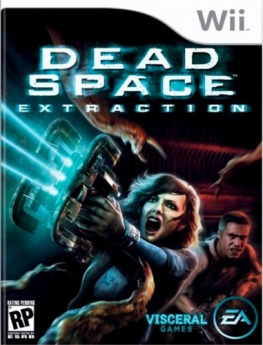
With “Dead Space Extraction,” Visceral Games has created a prequel worthy of the original game that features an excellent story and a unique take on the “on-rails shooter” experience.
“Dead Space Extraction” delves into the events that occur on the mining colony of Aegis VII when a mysterious marker is unearthed on a distant planet. In the original “Dead Space,” players got to see the aftermath of an alien virus infestation. Here—you get to experience it firsthand. When bad things start happening on the planet’s surface, you’re there. When all hell breaks loose, you’re there. And when a group of four strangers have to band together to try and find a way to survive, you’re there. “DSE” does an amazing job of immersing you in the terrifying wave of the Necromorph infection.
One of the biggest concerns about “DSE” coming into the game was the switch from third to first-person, and the fact that the game is “on-rails.” Luckily, both of them work perfectly. Not having to worry about navigation let’s you focus on the creepy atmosphere and the excellent story (penned by Mr. Antony Johnston). The Wii is built for shooters, and Visceral has done a great job of adapting all of the mechanics from the original game for the Wiimote and Nunchuck. Everything works well, and there is an option to customize things like the amount of camera shake for those that want a less jarring experience.
“DSE” also has features that the original game lacked. Here you can play two-player local co-op, for those that are too scared to tackle the Necromorphs alone. You can also play through unlocked chapters in a score-based mode, which is a nice reason to revisit parts of the game you’ve already beaten. What I really appreciated though, was the fact that the original six-issue motion comic that was based on Johnston and Templesmith’s series is here as an unlockable extra. It’s a great addition, and that storyline happens parallel to what players will be experiencing in the game.
The best compliment that I can pay the creative team is that the fact that “Dead Space Extraction” is a Wii game is completely irrelevant—it’s a great game that expands the “Dead Space” universe, and every fan of the original needs to experience it. It’s also a great introduction to the series for those wanting to know what all the fuss is about.
5 out of 5 Horrifying Origins
10-29-09: Nostalgia Review (DS)
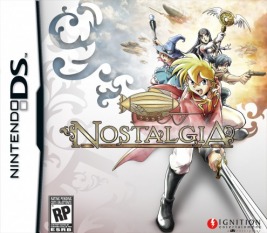
Over the past several years, my once fervent love of the Japanese RPG genre has faded. When I was a kid, JRPGs were whimsical adventures, with straightforward stories, simple control schemes and imaginative worlds to explore. With each console generation, it seems like the genre has become overcomplicated and in many cases, not much fun anymore. Which is why I was so pleasantly surprised to find “Nostalgia” for the DS to be a refreshing trip down memory lane that encompassed all the things I used to love about the genre.
“Nostalgia” follows the story of young Eddie Brown, son of the world’s greatest adventurer Gilbert Brown. The game opens with the last known adventure of Gilbert Brown, who is depicted as an Allan Quatermain/Indiana Jones type character. While rescuing a damsel in distress he seemingly plummets to his doom, his airship carrying her to safety. Upon learning of his disappearance, his son Eddie decides to take up the mantle of adventurer and travel the world in his dad’s airship to search for him.
Gameplay in “Nostalgia” is simple and straightforward. You explore the world either on the ground or in your airship, traveling to different locations and looking for clues about your father while accepting quests in each of the areas you visit. There’s plenty of traditional dungeon crawling, as you’ll be traversing everything from sewers to pyramids in your quests. The combat is turn-based, and each character in your party has certain weapons and abilities they can use in battle. Like many JRPGs, whenever you run into an enemy in the world, you're whisked into a battle screen to face off. You earn experience and upgrade your characters abilities, and you upgrade your gear through either finding loot or the purchase of bigger and better items from the various places you visit. Whether you’ve played a JRPG before or not, the game mechanics should be very easy to pick up.
What really stands out to me about “Nostalgia” is the presentation. The graphics are fine, but the score is excellent, and it really lends a swashbuckling tone to the game. Unlike a lot of JRPGs today, Nostalgia has a very whimsical vibe to it, and the sense of adventure that the characters exude adds to the sense of fun—this is what an adventure RPG is supposed to feel like. No dystopian future societies embroiled in political chaos, just fun, high-flying adventure.
“Nostalgia” is an aptly named gem of a game that reminded me why I fell in love with the genre in the first place. I would highly recommend it for those who want to return to the days of yore, or anyone looking to see why the genre became so big in the first place.
4 out of 5 Trips Down Memory Lane
10-24-09: Bakugan Battle Brawlers Review (XBox 360)
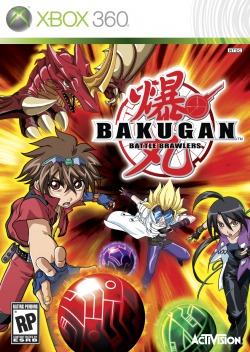
I’ll be honest, I knew very little about “Bakugan” going into playing this game. I had seen the cards and toys at the comic shop and the cartoon on TV, but I really had no idea what it was about. After playing “Bakugan Battle Brawlers”, I’m starting to see why it’s become so popular—it’s a simple, quick and addictive game. The developers have done a nice job of bringing the physical version to video game form, and they’ve made it accessible to those unfamiliar with the game.
“Bakugan” is like marbles on steroids. You place cards in between the two players and roll marble shaped balls at them (Bakugans), trying to land on one of the cards. When a Bakugan lands on a card, it springs open and morphs into a creature of some type. When two opposing Bakugan land on the same card, there’s a battle. Battles are point-based, and bonuses to the different Bakugan come from the cards that players can use during battle, as well as the cards they land on (“Gate Cards”). The video game adds another element to the battle, by having players compete in mini-games before each battle that can add points to their Bakugans. At the end of the mini-game, and after applying any bonuses, the Bakugan with the most points wins the battle.
The game’s presentation is pretty average. The cel-shaded graphics are fine, but the character animations are very limited. You don’t actually see the Bakugan fight it out as much as strike a pose and then win or lose a battle. The one good thing about the lack of combat animations is that there’s really no violence shown in the game, which will make parents happy.
The human characters also have about three different animations, and one or two catch phrases. Within an hour of starting the game, my character had exclaimed “That’s my skills talking’!” about a hundred times. The story is also pretty lean, as it’s basically a way to move you from one battle to another. On the plus side, you do get to create your own character and interact with all of the characters from the cartoon, which fans of the series should love.
The strength of “Bakugan Battle Brawlers” is that it captures the essence of the physical game and combines it with a simple control scheme. The tutorial is great, and I learned how to play in about ten minutes. The battles take less than five minutes each, so it’s a perfect game to play in bite-size chunks. And then there’s the whole collectible aspect of the game, where the points you earn in battle can be used to upgrade your Bakugan, as well as buy new ones. Because you can constantly edit your deck and the Bakugan you take into battle, every fight will likely be a different experience.
Probably the most disappointing aspect of Battle Brawlers is the lack of online multiplayer. This game was made to play with other people, and while battling NPC’s is still fun, taking your collection online and battling others would have been so much better. Hopefully if this game is successful, we’ll see the multiplayer piece in future installments.
All in all, “Bakugan Battle Brawlers” is a fun title that fans of the series will love, and those new to the game will still have fun with. It’s a good pickup if you have little ones, whether they’ve played the physical game or not.
3.5 out of 5 “That’s My Skills Talkin’s”
10-15-09: Halo 3: ODST Review
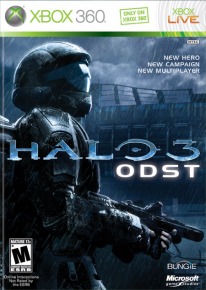
For me, “Halo 3: ODST” was a nice change of pace from the other games in the series. Instead of taking on the role of Master Chief in some far off space battle, you get put in the shoes of regular joes right here on Earth. The Covenant have attacked the city of New Mombassa in Africa, and a squad of ODSTs (Orbital Drop Shock Troopers) involved in the battle have become separated and scattered al over the occupied city. Players take on the role of the squad’s rookie trying to find his teammates, but they also get to experience happened to the other members of the squad when they got separated.
The game’s plot is decent, and switching perspectives between the different squad members is an interesting way of telling the story. Nate Fillion and Tricia Helfer provide great voicework for two of the main characters Buck and Dare, although their love story subplot is pretty lame.
The setting of “ODST” is what I struck me the most. The streets of New Mombassa are eerily quiet, and you are constantly making your way through the scene of a battle that’s already happened. Burned out buildings and scattered corpses give you an idea of how things played out, where key battles were lost, and where humans were able to hold out before getting overwhelmed. The game’s score is very somber and has a noir movie feel to it, which hammers home the concept that the good guys lost in New Mombassa, and now you’re trying to find some small glimmer of hope, something to turn the tide in the battles to come.
Aside from the campaign, the game also introduces a new multiplayer mode called ‘Firefight.’ Much like “Left4Dead’s” ‘Survival’ mode and “Gears of War 2’s” ‘Horde’ mode, the idea is to hold out as long as possible against wave after wave of enemies. While the mode itself is not unique, the difficulty modifiers tweak the gameplay enough to make each playthrough unique. For example, there are tweaks that make enemies throw more grenades, take more damage, become more evasive, etc. It’s a welcome addition to “Halo 3’s” multiplayer modes, and probably the one I’ll spend the most time playing in the future.
Speaking of multiplayer, the “Halo 3: ODST” package includes a second disc that has all of “Halo 3’s” multiplayer maps on it, as well as a couple of new ones. So, if you traded in your old copy of Halo 3 like I did, you are all set to go for multiplayer.
I enjoyed “Halo 3: ODST,” and it’s good to see Bungie exploring other elements of the Halo universe with new characters.
4 out of 5 Mal and Six Love Stories
9-21-09: Fantasy Craft RPG Review
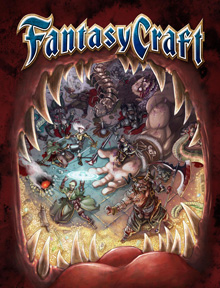
From the makers of “Spycraft,” one of my absolute favorite modern day game systems, now comes “Fantasy Craft,” a flexible system for traditional fantasy roleplaying from Crafty Games.
As a long time player of “Spycraft” games I found the basic rules of “Fantasy Craft” fairly easy to pick up. They have kept many of the things I liked, removed a few of the things I do not like about “Spycraft,” and generally succeeded at making a useful, generic fantasy RPG with opportunities for all kinds of players and games.
“Fantasy Craft” is a d20 based game, with classes that go from level 1 to 20 and skills, feats and spells. New features include clever action dice uses, a host of interesting and appealing races, feats that knock the socks off D&D core feats, and vitality/wound point system that make death a bit rarer but critical hits more satisfying.
Running two games of “Fantasy Craft” helped me see how the system worked and also how complex it was for new players to learn. At the start the rules have a bit more complexity than standard 3.5 edition “Dungeons and Dragons,” but the high consistency in how actions are resolved makes starting play easy. To mix up the standard (and sometimes dull) pattern of combat, tricks and stances give characters options to modify their attacks and take advantage of specific situations or foes. This serves to differentiate characters from each other and also adds to the tactical satisfaction the game provides.
The editing and the layout of the book are helpful for the new player but lacking in some small respects, such as terms missing definitions where you would expect them and an index less full than I would like.
There were also some unanswered questions from our sessions, such as poison saving throws or what happens if you shoot into a grapple (luckily grappling rules are easier than before and skill based).
One big change in the creation of “Fantasy Craft” and its evolution from D&D comes with spellcasting. Arcane magic works on a spell point system, with many familiar spells in the grimoire and good space to add more. Mages require a skill check to cast their spells, and expend spell points that are allocated per scene. Divine magic, working through miracles, is different: it just works. No god-given power will fail you, but that also means that divine casters in “Fantasy Craft” tend to have fewer magic powers than mages and sorcerers. I like this distinction a lot, and I look forward to exploring it further. These two changes combined remove the hassle and headache of spell preparation, a real momentum killer for many D&D games using 3.5 rules. This makes adventures flow more smoothly and allows newer players to approach spellcasters much more easily.
I am very happy with “Fantasy Craft,” and look forward to playing it more. An organized play campaign called “Wyrmstone” is in the works and should have some modules ready in time for AnonyCon. In the mean time I will be filling up spreadsheets with character and party ideas and running more demos to teach people the game. I heartily recommend it to any fantasy game enthusiast and hope to be more involved as it continues to grow.
4.5 out of 5 Action Dice
For more information on “Fantasy Craft,” head over to the official website at www.crafty-games.com. To check out the developing “Wyrmstone” campaign, go to www.wyrmstone.org. To find out more about AnonyCon and register for this year’s event, check out www.anonycon.com.
9-11-09: Muramasa: The Demon Blade Review (Wii)
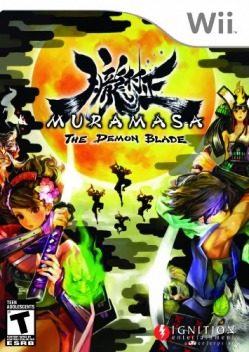
“Muramasa: The Demon Blade” is a fantastic game that combines side-scrolling 2D action with beautiful visuals and an interesting story steeped in Japanese mythology. While the gameplay can get repetitive, the presentation is so well done that you won’t mind hacking and slashing your way through the thousands of enemies that stand between you and the powerful weapons you are seeking.
The story of “Muramasa” takes place against the backdrop of a time of unrest in feudal Japan. There are mythical swords called Demon Blades that are scattered throughout the land, and the shogun is trying to collect them all to make him the most powerful person around. Players take on the role of one of two characters that are also seeking the mythical blades, each for their own reasons. Momohime is a young princess that has been possessed by a demon that is also looking for the fabled swords. Kisuke is a ninja who’s lost his memory, and is being hunted down for a crime he supposedly committed. Finding a particular sword is the key to his mysterious past. Unfortunately for all of the sword seekers, the Demon Blades are cursed, and they are spreading chaos through the land and unleashing powerful demons upon the earth.
It’s impossible not to talk about the visuals when discussing “Muramasa,” as it’s one of the prettiest games I’ve played in a long time. The backgrounds have an oil painting vibe to them, and as you travel to different locations, it’s easy to get caught up just staring at the leaves drifting across the screen, the fields of grain swaying back and forth or the sweeping vistas of the Japanese countryside. The character design is great as well, as you’ll encounter everything from your standard looking ninja to humongous bosses that reminded me of something you’d see in a Monty Python animated skit. It’s all gorgeous. Adding to the great visual presentation are the original Japanese voiceovers, which I have to say I’m glad the developers kept for the US release, as opposed to dubbing the game in English.
The combat in Muramasa can be as deep as you want to make it. One button is used for blocking and slashing, one unleashes special attacks, and two other sallow you to switch between swords and items, respectively. Based on what difficulty you choose, it’s fairly easy to slash your way through enemies by hammering on attack button, although you’d be missing out on the nuances that can make combat a lot more fun. The attack button in conjunction with certain directional pushes will allow for high and low attacks, uppercut and airstrikes. By switching swords in mid-combat, you can unleash special attacks that often deal damage to all enemies on the screen. There’s a rhythm that you can get into that will have you gliding around the screen, gracefully dealing out deathblows to the multitude of enemies you are facing. It’s also noteworthy that the game allows you to use a variety of different control options for the game, including a GameCube controller (I used the Wii Classic Controller for my playthrough).
The swords are the major focus of the game, and there’s two ways you can equip yourself with Demon Blades. When you defeat bosses, you are rewarded with blades that you’ll need to unlock previously inaccessible areas. In addition, regular enemies leave collectibles behind that you use as currency to pay for forging new blades. You carry three blades with you at any point in time, so as the game wears on, you’ll have to make some decisions about which ones you should be carrying based on the types of enemies you’re facing. Every blade has a special property, is it’s a matter of bringing the best combination of blades to any given fight.
On the downside, the game does get pretty repetitive after a while, and even if you’re using the full array of attack moves, you’re going to end up doing the same things over and over again in combat. You’re also forced to do quite a bit of backtracking throughout the game, and even though those backgrounds are pretty, I still felt like I was wasting a lot of time traipsing through areas I’d seen before. These gripes are a small in comparison to the many things the game gets right, and they’re well worth putting up with for the rest of the experience.
Overall, “Muramasa: The Demon Blade” is an excellent game that combines some classic 2D gameplay elements with beautiful visuals to make a game that truly stands out from the crowd. This should be a no-brainer purchase for Wii owners.
4.5 out of 5 Possessed Princesses
9-8-09: Raven Squad Review (XBox 360)
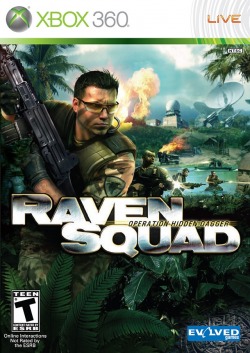
With “Raven Squad,” developer Atomic Motion has attempted to fuse the first-person shooter and real-time strategy genres into one seamless experience. While the core mechanic of “Raven Squad” works really well, mediocre presentation and lack of polish mean there's not enough meat on the bones to make the game truly stand out.
“Raven Squad” follows a bunch of mercenaries that get caught up in a civil war in the Amazon jungle. Players control two squads of three mercs apiece, and must battle their way through various locales to try and turn the tide of the civil war, recover sensitive information and get out of the jungle alive. In addition to the combination of FPS and RTS gameplay, the game features online co-op through the entire campaign.
Let's talk about what works first. The core mechanic of the game is the ability to switch on the fly between first-person shooter view and an overhead view (RTS style). One of the squads you control specializes in assault tactics and one is more suited to stealth. Each squad member has a standard weapon and then a special weapon, anything from a grenade to a sniper rifle to a rocket launcher. You can also switch between the two squads by pressing down on the d-pad, allowing you to move from squad to squad and from FPS to RTS pretty seamlessly. This core mechanic works really well, and it allows you a good deal of flexibility in how you approach the game. I would usually start in RTS mode, canvassing the area and moving my squads into position. If there were only a few enemies in the area, I'd let the squads take care of them in RTS mode. For larger groups, I'd switch to FPS mode and target the enemies that posed the biggest threat (snipers, machine gunners, etc.).
The game has a good checkpoint system, so failing part of a mission doesn’t mean starting from scratch again. Another feature I liked was the ability to change the difficulty back and forth, so a particularly frustrating section could be made easier without dialing back the difficulty for the entire game.
On the downside, “Raven Squad” certainly has its share of issues. The graphics are very average, and there's not much of a score to speak of. None of the characters have any depth, and the voice acting is hilariously bad--not in the funny, 80's action movie kind of way mind you, just bad. The lead character Paladin is the worst of the bunch, which is unfortunate, because he narrates the entire campaign. His monotone delivery is reminiscent of some of the early “Resident Evil” games, and the dialogue itself is way too bland for a game that is trying to be an homage to 80's action movies. I think the game would have been much better served with an over the top portrayal of movies like “Commando” or “Missing in Action,” with a lot more explosions, zippy one liners and “F-Yeahs.” A more frenetic pace would also keep players from focusing on the less polished parts of the presentation.
In the end, “Raven Squad” has a solid premise and manages to blend FPS and RTS gameplay together well, but it doesn't do a whole lot to build on those strengths. I'd like to see what the developers could do with a larger budget, as well as some more inspired writing and voice acting. As it is, “Raven Squad” will likely best be enjoyed by co-op partners who have seen a lot of direct-to-video action movies. Don't be surprised though to see other developers taking inspiration from what Atomic Motion has done in combining two genres of gameplay, as I think you'll see it show up in some big releases over the next couple years.
2.5 out of 5 “Get To The Chopper's”
8-25-09: EA Sports Active Review

Even though I picked up “EA Sports Active” in late June, I’ve been holding off writing a review until I had a chance to really put the game through its paces. After two straight months of consistent use, I can honestly I think “EA Sports Active” is a great fitness tool with a great deal of customization, but not necessarily a weight loss solution for those looking to shed extra pounds.
“EA Sports Active” comes with the disc, a thigh holster for the nunchuck, and a resistance band that is used for most of the upper body exercises. As opposed to “Wii Fit,” this game is heavily focused on strength building and cardio, and it offers three levels of difficulty. You can choose to customize your own workouts from the 25 that are included, or you can run through some pre-set routines that are about 20 minutes each. The leg exercises are very focused on squats and lunges, with many variations, while the upper body exercises consist of a lot of curls and presses for arms and shoulders. The interface is simple, and your avatar will mirror your movements during exercises, while your trainer appears in a window at the lower right corner of the screen, giving you encouragement and correcting you when you use improper form.
The real of core of “Active” though is the “30-Day Challenge,” and that’s what utilized the most. The “30 Day Challenge” puts you on a schedule of varied workouts for a month at a time. The schedule is two days on, one day off for the duration. All of the workouts are in the 30-minute range, and depending on the difficulty, you could be burning anywhere from 150-250 calories per workout on average. At the end of each workout, you get a summary of your performance that includes the total workout time and the amount of calories burned. You can also choose to take daily surveys about your eating habits and lifestyle that will give you more of a focus on overall health than just the workouts.
I’ve now done two complete “30-Day challenge” modes, one on medium difficulty, and one on hard. The harder difficulty definitely provides a strong workout that had me drenched in sweat by the end of each session. The interval training and variety of activities really help you feel like you got a full body workout, and I will definitely be using this game as a backup to the gym when I can get there, or I’m looking for a little extra workout on the side. I dare say that this could replace a gym membership, especially if you upgrade the resistance band (the one it come with is light), and add some ab work of your own on the side, as the game doesn’t have any.
As a weight loss tool though, I didn’t see dramatic results from my two-month stint. In fact, I weighed exactly the same on the day of my last workout as I had weighed two months earlier. Granted, I did not really change my eating habits until month two, but I figured I’d drop at least a couple of pounds. That’s not to say you can’t lose weight with the game, but I’d hesitate recommending to someone who’s buying it for that purpose alone. The strength of “EA Sports Active” is in its “total boy fitness” approach, and in that vein it’s a very balanced, very well constructed tool.
4.5 out of 5 Squat Holds
* In November, the game will be getting a sequel that adds 35 more exercises, including some focused on ab work.
8-4-09: Watchmen: The End is Nigh Review (PS3)
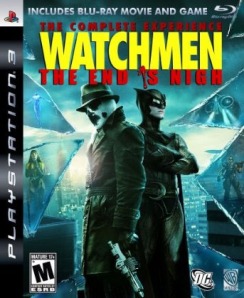
“Watchmen: The End is Nigh” is a surprisingly good brawler that offers some interesting insight into the Watchmen universe. Unfortunately, there’s a big difference between episodes one and two that drags down the overall product.
“The End is Nigh” features two stories involving Rorschach and Nite Owl that take place several years before the Keene act. The first episode has the duo tracking down the criminal Underboss after the escapes from jail, while the second episode sees them trying to rescue a girl that has been abducted and forced into the adult film industry. Len Wein wrote the storylines for the game, and Dave Gibbons provided the art. The motion comic style presentation of the cut scenes works well, and the story shines some light on why Rorschach and Nite Owl stopped working together years before the events of the film.
Mechanically, this game is a lot of fun to play. Most of the moves at Rorschach and Nite Owl’s disposal can be achieved with three buttons, so it’s easy to pick up and play. I found it to be very reminiscent of old school beat 'em ups like Streets of Rage and Double Dragon, complete with boss battles. The action is very repetitive, as you make your way through wave after wave of generic bad guys, beating the crap out of them. Brawlers by nature are repetitive though, and I never got sick of Rorschach pummeling people’s faces into the pavement. Seriously, there are some brutal beatdowns in this game. Nite Owl has some sweet moves too, and his suit can build up an electric charge that allows him to deal extra damage to multiple enemies. There is campaign co-op, but it’s offline only, so no hooking up over Xbox Live or PSN to play with a friend. Still, the AI is good enough to get you through the game with few problems.
So what’s the downside? Well, even though it’s $5 cheaper than Part 1, Part 2 is only half the length of its predecessor. There are nine total chapters in the game, and six of them are in Part 1. This makes part 2 feel like little more than an add-on, even though it involves a separate storyline. All told, downloading the two episodes of the game will run you $35, which is a bit steep for this one until unless you are a diehard Watchmen fan. The best way to get this game is to pick it up as part of the PS3’s “Watchmen: The End is Nigh—The Complete Experience.” The $50 Blu-ray collection includes the director’s cut of Watchmen as well as both episodes of the game. If you’re an Xbox owner, you’ll be able to get both episodes on a disc for $30, which is still cheaper than downloading the game.
All in all, “Watchmen: The End is Nigh” is a really fun game that would have benefited from online co-op and a $20 price tag.
3.5 out of 5 Broken Teeth
7-13-09: Treasure World Review (DS)
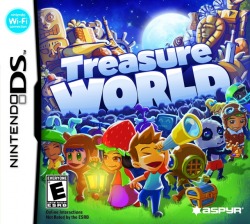
Aspyr's "Treasure World" is a unique combination of a collecting game and a social networking platform that makes great use of the Nintendo DS' Wi-Fi capabilities.
The game's story revolves around a space-traveling creature named the Star Sweep, who crash lands on earth. His spaceship is out of fuel (Stardust), and the player needs to help his partner the Wish Finder gather more, which is done by locating stars and "cleaning" them to remove Stardust and reveal any hidden treasures. Interestingly, the main gameplay consists of walking around your neighborhood (or any public space) as the DS searches for Wi-Fi connections. Each connection registers as a star in the game, which either gives the player a treasure or some Stardust. Players can trade Stardust for unique treasures with the Star Sweep, as he needs the dust to fuel his ship.
Players are given their own world (represented by a grid) to display their treasures, which they can arrange as they like within that space. Once displayed, each treasure also creates a sound or musical note that can form unique songs based on how treasures are arranged within the world. Players can then upload their worlds to www.clubtreasureworld.com and share songs, trade treasures, etc.
The arranging, collecting and trading aspects of "Treasure World" taps into that Pokemon, action figure or baseball card collector in all of us. There's an addicting quality to the collecting, as you can just leave the DS closed and it will still pick up any connections you pass by, encouraging you to take it wherever you go. I actually took the DS around with me for a week, and as I traveled to different locations I racked up the treasures and Stardust. Connecting and uploading my world to the "Club Treasure World" website was easy, and younger kids should have no problem with the process (although it does require parent permission, which is a good thing).
I think "Treasure World" is a great introduction for kids into the whole trading/collecting genre, as it's simple to collect, customize and share, and it doesn't overwhelm players with the combat and RPG elements that most games in the genre usually have. Kids already take their DS to school or on vacation, and with "Treasure World" they'll be discovering treasures every time they go somewhere new. Even if they don't take advantage of the social networking aspect of the game, they can still create their own unique space, record songs, etc. In a landscape where most games in a genre are hard to tell apart, "Treasure World" carves out its own unique space that should tap into the explorer in every kid who plays it.
4 out of 5 Space Treasures
7-2-09: Roman Taxi Review
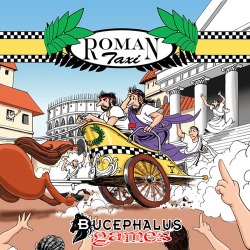
Here we have a game of delivering historic Roman citizens to various sites around Rome. Cute historic premise to start, but the game went downhill from there. The play involves moving your taxi around the board using colored squares drawn as cards, basically like Candyland or similar children's games. There are some random event cards and some time limits so your passengers do not get cranky.
We found that many of the event cards were boring, others were worded such that we needed a FAQ to understand what they were supposed to do exactly. The action of the game progresses very slowly, giving players little chance for excitement. Very few choices are presented to the player on his or her turn, so moves are often quite obvious. During play sometimes one player's taxi would be in the way of another, but resolving that was left to us, since it was not explained in the rules. Blocking or leap-frogging would both be interesting, but it was unclear. Finally, with four people the cycle of drawing from face-up cards could be brutal, leaving one player out of the 'good' moves for multiple turns in a row.
Overall we found this game disappointing. I think with some good house rules (like a hand to choose from, faster movement and more nuanced events) the game could be much stronger, but it is low on my list for investing my time.
1 out of 5
6-30-09: Tiger Woods PGA Tour 10 Review (Wii)

Back in the day, the PGA Tour golf series by EA was a staple of my regular gaming schedule. “PGA Tour ’96” for the original PlayStation is still one of my all-time favorite games. As the years went on, the lack of real innovation and some questionable mechanic choices led the series to fall off my radar. So when PGA Tour 10 was announced as essentially the vehicle for debuting MotionPlus, I decided to give it a try and see if it was time to jump back on the PGA Tour game bandwagon. I can happily say that not only is “PGA Tour 10” a great Wii game, it’s probably the best golf game I’ve ever played.
First things first. How does the MotionPlus perform? In a word: awesome. Physically, the small add-on that comes bundled with the game snaps on to the bottom of the Wiimote. A new Wiimote cover is included as well, which is a bonus. In terms of gameplay, MotionPlus creates almost a perfect 1:1 translation of a real golf swing. The places where I noticed the biggest improvement over previous games is in reading the angle of the clubface as well as the overall feel of putting. You can now reliably apply draw and fade to shots just by opening or closing the clubface during regular shots. On the green, the “Precision Putting” system is fantastic, and actually allows you to put based on feel, as opposed to a meter (although it does have one for visual reference).
The great thing about “PGA Tour 10” is that it doesn’t rest on the laurels of having great controls. The game is packed with features. You can create your own golfer and launch your career. You can play online against other golfers. You can also play online against the pros each week during actual tournaments. In “Play the Pros,” you play and submit a score each round during the weekly PGA tournaments, and the leaderboards will chart your place amongst the pros. Heck, you can even play Frisbee golf, which is a great way to get kids into the game, as throwing the Frisbee is very easy, and they can play the same courses as in golf mode.
My only real complaint with the game is that you can’t save your place during the “Play the Pros” mode, so you need to finish a round and submit a score before you can quit. It’s a minor issue, and it’s vastly overshadowed by everything else that’s great about the game.
All in all, “Tiger Woods PGA Tour 10” is the total package, and it may be the last golf game you need to buy for a long time.
5 out of 5 Holes in One
6-20-09: Paper Toss Review (iPhone/iPod Touch)
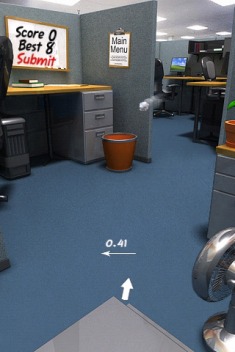
Backflip Studios’ “Paper Toss” is an addictive game for the iPhone that is both simple and challenging, and would be well worth the dollar or two that it should cost to download. Luckily for all of us, the game is absolutely free, making it a no-brainer for any iPhone or iPod Touch owner.
“Paper Toss” at it’s core is a game that involved throwing crumpled balls of paper into a wastebasket. The game is set in a generic office, and takes place mostly in a cubicle. Players use a flicking motion on the touchscreen to launch the paper toward the basket. The distance is determined by how hard you flick, and how straight you keep your finger will affect the angle of you shot. To add additional challenges, there are three difficulty levels, each one putting the basket farther away from the previous one. There is also a fan on one of the desks in the office, and it blows at variable speeds, affecting your shot the same way winds gusts in a golf game would. Your goal is to get as many consecutive shots to fall in the basket as you can. It sounds easy, but between the distance and the wind, it’s lot harder than you’d think. If you get a decent streak going, you can submit your score to an online leaderboard and compare your stats against your friends and others.
The graphics in the game are great, and they invoke that “Office Space” kind of feel. The physics are excellent, with both the wind and your shot angle being represented consistently and accurately. All in all, “Paper Toss” is a great game and a perfect fit for the iPone/iPod Touch. Highly recommended.
4 out of 5 Games Too Good To Be Free
5-16-09: Let's Golf Review (iPhone)
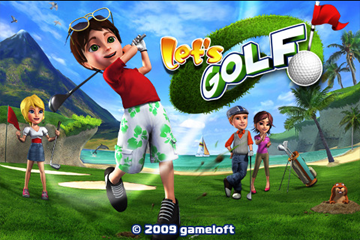
“Let’s Golf” offers single player and multiplayer golf matches, ranging from a simple 3-hole quick match, to a full tournament. Players choose from one of four golfers, which you can customize as you progress through the game. There are four courses in the game, two of which need to be unlocked by playing through tournament modes.
Graphically, the game is impressive, and it matches the style of “Hot Shots Golf” very well, with stylized player models and colorful courses. The controls and interface are simple, and will be very familiar to anyone who has played golf games before. You tap on a meter to start your swing, tap when you get to the power level you want, and tap at the bottom for accuracy. You can even add spin to the ball in mid-flight. Positioning your shot on the ground is easy, as you just drag the arrow to where you want the ball to land.
All in all, this game is pretty much everything I’ve wanted in a golf game for the iPhone. It’s easy to play, controls well, and looks great. It will even save your game when you cancel out to the main iPhone menu, so you can play tournaments a few holes at a time. Here’s hoping that new courses and golfers get released in the future.
4 out of 5 Nice Shots
5-6-09: Velvet Assassin Review (XBox 360)
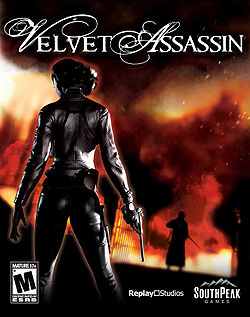
by Brian LeTendre
Velvet Assassin is a very good stealth action game that offers a unique take on World War II, showing players the war from inside enemy lines.
Inspired by real-life spy Violette Szabo, Velvet Assassin follows the story of Violette Summer, a spy operating inside Nazi occupied territories. Violette undertakes several missions that have her infiltrating heavily guarded areas to accomplish a variety of objectives, ranging from sabotaging fuel depots to assassinating high-ranking Nazi targets. At the start of the game, Violette is bedridden, and she is reliving the events of her life through a series of fevered dreams. Those dreams are the missions you play through, which are narrated by Violette as if she's recounting what happened.
The gameplay in Velvet Assassin is very methodical. Running into an area guns blazing results in almost instant death, as Violette can't take a lot of damage. Hiding in shadows, watching patterns, and taking out enemies when they are isolated is the key to making through a level alive. As Violette sneaks around environments, she becomes outlined in purple whenever she is hidden from sight. While hidden you can survey the environment and determine the best way through. There are often multiple ways to approach a given situation, and you can use the environment to your advantage. For example, in one of the early missions, Violette has to navigate her way through a warehouse area. There was a guard outside and two inside. I whistled to lure a guard away from the front door, and hid behind some crates until he walked past me. Sneaking up behind him, I took him out with a dagger to the neck. I then climbed up some crates and looked into the warehouse from the rooftop. The two guards inside were talking to one another, so I was able to climb back down and sneak around the side of the building. I lured another guard out, and he walked outside, standing in a small pool of oil near one of the many drums outside. I shot the puddle, igniting the oil and sending the guard to a fiery death. When the last guard came out to see what was going on, I took him down with one shot between the eyes. As I then walked through the empty warehouse, I noticed two other paths that I could have taken through the area, one of which would have allowed me to disable a fuse box, plunging the area into darkness and making it easier to sneak around.
One of the more interesting gameplay elements is tied to the story's presentation. Violette has the ability to use morphine, which puts the game into a sort of bullet-time, allowing her to take down enemies that are frozen temporarily. From a narrative standpoint, when a player uses morphine, it signifies Violette medicating herself in her hospital bed.
In addition to completing your objectives, you also need to keep an eye out for various collectibles, as they hold the key to being able to upgrade Violette's abilities. Each collectible item has a experience point value, and once you amass enough points, you can upgrade one of three abilities (morphine, stealth, strength), allowing you to tailor the game a to your playing style. If you want more running and gunning, upgrade strength to allow you to absorb more damage. Upgrade morphine to make its effects last longer, or to carry more of it at a time. If you upgrade stealth, you can sneak faster, giving you more opportunity to catch an enemy unaware. For me, stealth was the way to go, as the extra quickness gave me more margin for error when sneaking up on enemies.
The graphics and presentation in Velvet Assassin are good overall. The way the story unfolds through Violette's visions and a series of photographs is interesting, and the voice acting throughout is good. Some of the character models aren't so great, but since the focus is more on gameplay, it's not a big deal.
My only real complaint about Velvet Assassin is the checkpoint system. Even on the normal difficulty setting, the checkpoints are too far apart. Because much of the game involves trial and error, this results in you repeating a good chunk of a level at a time, just to get to that one part you screwed up on. I would have preferred a “save anytime” system, or at lest more forgiving checkpoints. That said, knowing how unforgiving the game is makes you think your strategy through before jumping into any given situation. And, when a mission pays off at the end of a level, there's a real sense of accomplishment, as you know you've earned it.
Overall, Velvet Assassin is a great entry into the stealth genre, providing a very challenging, but also rewarding experience. It's also a breath of fresh air in the stagnant World War II genre. Highly recommended.
4 out of 5 Silent Kills
5-4-09: Tecmo Bowl: Kickoff Review (DS)
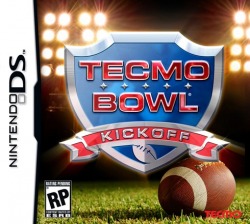
by Brian LeTendre
It’s not an exaggeration for me to say that the original “Tecmo Bowl” was my second most-played NES game of all time, right behind Super Mario Bros. The simplicity of gameplay, the ability to play against friends, and the NFL license made came together to form a game I spent countless hours on. To this day, it still holds up. 1991’s “Tecmo Super Bowl” was even better, as it included more plays and the full roster of NFL teams, and I put a huge chunk of time into that as well. So as you might imagine, I was excited when I found out that a new edition of Tecmo Bowl was coming to the DS. After picking the game up and playing it for a few weeks, I’m happy to say that it’s an almost perfect throwback to the 8-bit days.
While “TB: Kickoff” doesn’t have the NFL license (thanks a lot, EA), the 32 fictional teams are fully customizable, from logos to team colors, to names and even cities. If you so desire, you can actually recreate the whole league, but I only went so far as to try and remake my beloved Chargers’ color scheme.
The gameplay and presentation is exactly as series fans will remember it: pick from one of 8 plays (4 run and 4 pass), and hope the defense doesn’t pick the same play you did. On the defensive side of the ball, you have until the ball is snapped to pick the one defensive player you will use for the play—no switching on the fly like in “Madden.” Touchdowns and field goals trigger cheesy cut scenes, and the halftime show features cheerleaders who wink at you knowingly. It’s a perfect re-creation of the original games.
A welcome new addition to the series is online multiplayer. You can battle other players through local wireless or through a wi-fi connection, matching up with people across the world. While I haven’t spent much time with this feature, it certainly works well, and gives the game another level of replayability.
There is only one area where the game fumbles (get it?), and that’s in the sound design. “TB: Kickoff” eschews the scores of the original games for a guitar rock theme that gets annoying really quickly. Why they didn’t use the iconic theme from the original is beyond me. As it is, I turn the sound down and hum the original score to myself while playing.
All in all, “Tecmo Bowl: Kickoff” is an absolute blast, and completely recaptures the feel of the original games. Much like the originals, even non-football fans can get a lot of enjoyment out of the simple gamplay and nostalgic presentation. Highly recommended.
4.5 out of 5 Touchdowns
4-10-09: Wii Fit Review

by Brian LeTendre
Like many others, I was somewhat dismissive of the Wii Fit when it first arrived in the US almost a year ago. As a lifelong gamer, I had seen enough gimmicky peripherals (hi Virtual Boy!) come and go that I am pretty skeptical when new ones come along. However as the year went on, positive reviews kept pouring in, and even my non-gamer wife started expressing her interest in getting Wii Fit. So about a month and a half ago, I happened to be in a Best Buy when a palette of Wii Fits was put out on the floor. I impulsively picked on up, as these things are selling like hotcakes, and I didn’t know whether or not I’d see one again for a while. After getting it home and playing around with it for several weeks, I can honestly say that the Wii Fit is a great workout tool, and well worth the $89 dollars, but your mileage will vary depending on how much you put into it.
Setting up the Wii Fit is very simple. When you place the Balance Board on the floor and turn it on, it will automatically sync with the Wii. You create a profile by selecting your Mii and then go through a “body test,” where your balance, your weight and your BMI are all recorded. You then set a weight loss goal for yourself and a timeframe that you want to accomplish it in. From there, you can jump right into an array of exercises and minigames that are available. The activities are categorized into four categories: Yoga, Strength Training, Aerobics and Balance Games. Each of the four categories has a handful of basic exercises and games unlocked in the beginning. As you engage in the different games and exercises, you unlock “fit credits,” which are used to unlock other activities.
Activities range from things like hula hooping to push-ups to step aerobics. There’s even a jogging activity, where you put the Wiimote in your pocket and it acts like a pedometer. Best of all, you can pick which activities you do each time, allowing you to completely customize your workout. Each individual activity has a leaderboard, so you can try to beat yourself or any of the other users each time you complete an activity. Whenever you log into Wii Fit, you’ll see a calendar that displays the dates you’ve used the program, and you can see your progress toward your goal. You’ll also have the option to take the “body test,” although you don’t need to every time.
In the several weeks I’ve been using Wii Fit, I have been augmenting my regular gym workouts with it. In this fashion, it has served me very well. What I like most about Wii Fit is that the activities on it focus on flexibility, balance and building core strength. The board itself is very sturdy and durable, much more solid than I had expected it to be. One thing that bears mentioning though is that the trainers and AI can be a bit critical at times. The game will chastise you when you don’t consistently use it, and the trainers won’t hesitate to tell you that you are weak in certain areas and need more work. Also, after you go through the first “body test,” your Wii will get chubbier if you are seemed overweight. All of those things serve to motivate me more, but if you’re overly sensitive (like Matman), you might just get your feelings hurt.
Overall the Wii Fit is a great peripheral and a solid workout tool that should help you get results if you use it consistently.
4 out of 5 Gimmicks That Work
**I should also mention that my wife has been suing Wii Fit as well, and she gives it her non-gamer seal of approval.
3-28-09: Fallout 3 Review (XBox 360)
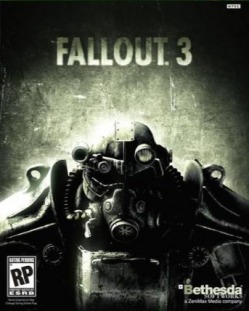
by Brian LeTendre
Fallout 3 is a stellar RPG by that combines an epic post-apocalyptic world with great story and gameplay to create a game that is truly a standout in the genre.
In the world of Fallout 3, the culture of America reached its pinnacle in the 1950’s, and in many ways never moved away from that. In 2077 a nuclear war broke out, and to escape the horrors happening on the surface of the earth, people built underground “vaults” that became cities unto themselves, places where people were born, grew up and died without ever leaving.
The character you play in Fallout 3 is someone who was born in a vault. One day, your father up and leaves, and you decide to venture out into the surface world to find him. What you find is a Wasteland that has been devastated by nuclear war. Out in the world you find people and creatures that have been mutated by radiation, as well as regular people who have found ways to eek out and existence on the surface, and in some cases, even live comfortably. As you search for your father, you come into contact with many of these people and creatures. You form relationships, take on jobs and missions, and create an identity in the world based on the actions you take.
From an RPG standpoint, all of the staples are here, including skill points and “perks,” which increase with each level. It’s actually very much like Dungeons and Dragons 3rd edition, where feats are the equivalent of perks. There’s enough variety that you can have completely different experiences with the game based on how you level up. My character, for example, eschews melee weapons in favor of long range weapons and stealth skills. I prefer the quiet, long range kills as opposed to getting my hands dirty.
Much like Bethesda’s last RPG Oblivion, Fallout 3 takes place in a gigantic world (the remnants of Washington, D.C.), which you can explore at your leisure. I can’t tell you how many hours I’ve spent just wandering around through bombed-out towns, crumbled bridges and labyrinthine subway tunnels. Because of the scarcity of resources in the world of Fallout 3, exploring and scavenging is almost a necessity, as you’ll constantly be looking for supplies, weapons and ammunition to replace or repair what you already have.
The easiest way to level up is through the completion of quests, as opposed to just running around, so I had to break up my exploration with the occasional mission now and again. The side quests are interesting enough though, that I found myself putting off the main storyline in favor of taking quests and seeing as much of the world as possible. There are so many stories to be told out in the Wasteland, and Bethesda pays so much attention to detail that you never feel like you’re wasting your time.
Mechanically, the game offers a completely customizable experience. You can approach combat from a real-time perspective, and the game acts like a third-person shooter. Or, you can take a more turn-based approach, where you activate the V.A.T.S. (I forget what it means) system, which allows you to target different enemies’ body parts, making combat very deliberate. The turn-based system is based on “action points,” which is what you spend to target enemies. I use a combination of both, depending on who I’m facing and what weapons I have. The controls are very easy to pick up and play with, and your inventory system is managed by a device you wear on your arm, which is called up by pressing a button. It all fits together quite well.
While I am by no means finished with Fallout 3, 26 hours is enough to tell me that I love it, and I’ve already gotten my money’s worth. I highly recommend Fallout 3 to anyone who wants an immersive single player experience that you can get lost in for hours at a time.
5 out of 5 Super Mutants
3-19-09: Retro Review--Dodge 'Em
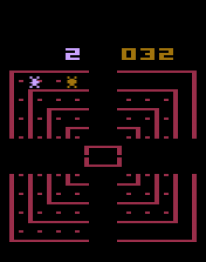
by Brian LeTendre
Dodge ‘Em is a super simple driving game that debuted in 1980 for the Atari 2600 system. The basic concept was simple: race around a track that has four different levels, and avoid colliding with the computer-controlled enemy car. As you race around the track, there are four gaps that allow you to switch to a different level. Similar to Pac-Man, you drive over little traffic lines on the screen, and the level is finished when you clear all of the lines. The main advantage you have over the computer is the ability to accelerate to twice your normal speed, by holding down the controller button. However, it’s also more difficult to switch lanes when you’re speeding, so there’s a trade-off there.
The computer in this game is downright evil, seemingly anticipating your every move before you make it. For me, this resulted in trying to “fake out” the computer, and switch tracks at the last minute. One second too late though, and I was stuck on a collision course with the other car. To make things even tougher, once you clear the first two screens, a second computer-controlled car shows up, and things get near impossible.
The game can last anywhere from 30 seconds to several minutes, making this a great game to enjoy in bite size chunks. If you have a friend to play with, there’s also a 2-player mode as well. For such a simple game, Dodge ‘Em does a great job of capturing that “one more try” addictive feel that still holds true today.
4 out of 5 Collisions
*Dodge ‘Em can currently be found on the Atari Anthology for the PS2.
3-1-09: Game Over--Why Gamefly Wasn't For Me
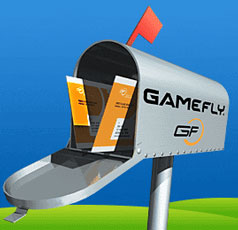
by Brian LeTendre
Economic times are tough. As an avid gamer, I am faced with the reality that there is no possible way for me to afford to buy the majority of games I want to play on a regular basis. On a good month, I can possibly afford two new games, which are usually discounted because I'm trading in recent games (for a terrible value) and applying the credit toward the new ones. This results in my collection constantly turning over, and I still can only afford a couple of games a month.
Enter Gamefly. In December, I rationalized that if I pay $24 a month (the two-game out at a time plan), I could play a ton of games and save myself a ton of money. So I signed up, and for the last three months, I've been using the heck out of that service. It seemed like a no-brainer: Gamefly made perfect sense for me.
Then I found myself buying a few new games recently, and I had to step back and re-examine the situation. I asked myself: “If I am getting all the games I want through Gamefly, why the heck and I still spending all this money?” The answer was surprisingly simple: because I am not getting the games I want through Gamefly.
I looked back at my order history over the three months I've been a member. The way it breaks down, I have been playing a lot of games, but none of the top-tier releases I have in my queue are ever available. This results in me getting a steady stream of older games (or less popular new ones), while the new games I want to play sit on my queue. Eventually, I end up going out and buying these games, so I end up spending what I usually spend, along with an extra $24 a month.
To illustrate my situation, below is a list of what I've played over the past few months, along with a list of some of the titles in my queue. And for those that are not familiar with Gamefly, the way it works is that they send you the game that is available and closest to the top of your queue on any given day (like Netflix and Blockbuster).
Here's the lists:
Games Played:
February
Ultimate Spider-Man (PS2)
Dark Sector (360)
Soul Calibur 4 (PS3)
House of the Dead 2&3 Return (Wii)
January
The Darkness (360)
Mercenaries 2 (360)
Quantum of Solace (360)
Star Wars: Force Unleashed (360)
Prince of Persia (360)
December
Harvey Birdman: Atoorney at Law (Wii)
No More Heroes (Wii)
Mushroom Men: Rise of the Fungi (DS)
Persona 3: FES (PS2)
Silent Hill: Homecoming (360)
Games in Queue:
Mortal Kombat vs. DC Universe
Fallout 3
Alone in the Dark
Saints Row 2
Mirror's Edge
Motorstorm: Pacific Rift
Sonic: Unleashed
Spider-Man: Web of Shadows
Far Cry 2
Afro Samurai
Banjo Kazooie: Nuts and Bolts
Rainbow 6 Vegas 2
Need for Speed Undercover
GRID
Keep in mind too that I own all three systems (PS3, Wii, Xbox 360), so I try and get games on whatever console they are most available on. The list above is pretty striking, and the trend is clear: new games are just nowhere near as available as older ones. Now mind you, this is not necessarily a huge problem, if your primary interest in Gamefly is playing older games. If you don't care when you get your hands on something, then the service is probably a great value. Heck, when I first signed up, I thought I didn't care about when I played new games. Turns out I do though, and that makes Gamefly a bad investment for me.
So, at the end of the day, I am canceling my Gamefly membership. The added expense isn't something I can justify if I can't get my hands on the newest releases in a reasonable time frame. I guess it's back to trade-ins and hard choices for now, at least until Blockbuster gets their game rental service up and running.
2-22-09: X-Blades Review (PS3)
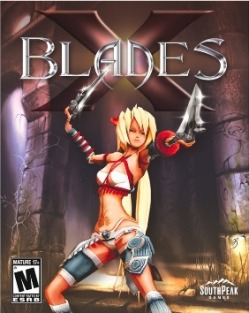
by Brian LeTendre
X-Blades is a fast paced hack and slash game with a deceptively deep combat system. While it has a few flaws that hold it back from greatness, there's still a lot of fun to be had with the game.
X-Blades tells the story of Ayumi, a treasure hunter who unwittingly releases a great darkness into the world, cursing herself at the same time. She then must find a way to rid herself and the land of the evil that has corrupted it.
Ayumi is a scantily clad young woman with a pair of gun swords and a snarky attitude. There's a definite anime feel to her character design, and this extends to the game's cut scenes, which are done in the same style. The environments are designed more realistically, and the large, open levels sport some very good looking visuals. The look of the enemies lies somewhere in between, with some looking more realistic, and some more cartoony.
Speaking of enemies, Ayumi does battle with lizard creatures, giant spiders, ghosts, elementals and more. Each time she encounters something new, an entry is made into her bestiary, which she can read to find out about the strengths and weaknesses of everything she faces off against. This becomes important, because certain enemies, especially some of the larger bosses, can only be defeated by certain powers.
It's in Ayumi's array of powers, and the combat system in general, where X-Blades shines. As Ayumi defeats enemies, she collects small orbs (souls). These are used as currency to purchase new abilities and upgrades. Ayumi's spells and powers are based on the elements, so she can use fireballs, cause earthquakes, and even freeze groups of enemies at a time. The powers are mapped to different buttons on the controller, and you can pause combat at any time to switch up the configuration based on personal style and the weaknesses of enemies. One very important thing to note about powers is that you choice of whether or not to use dark powers will have an affect on how Ayumi’s story ends.
All of Ayumi's powers are fueled by her rage meter, which fills up when she engages directly in combat. It's in this way that the game encourages you to constantly be in the thick of your enemies, hacking and blasting away. The combat is fast and furious, with hordes of enemies swarming you at once, and attacks coming from all sides. As Ayumi's abilities increase. She's able to do heavy damage to bunches of enemies at once. Melee upgrades give her the ability to glide through combat, slashing enemies and gaining damage multipliers for chaining attacks together. It actually reminded me a bit of both “Too Human” and “Devil May Cry,” as the game is at its best when you are flitting around the battlefield, cutting foes to ribbons and using devastating area of effect spells.
X-Blades has its share of problems too, though. The story is not that engaging, and both the cutscenes and voice acting don't do much to help. From a gameplay standpoint, the camera sometimes struggles to keep up with the pace of combat, and you'll find yourself frequently clicking on the analog stick to re-center it on Ayumi. This can result in you losing your bearings at times, making you vulnerable, especially to attacks from bosses, who do a lot of damage. The levels also get redundant after a while, as the second half of the game has you playing back through the levels from the first half, under slightly different circumstances.
Which brings me to what I thought was the game's biggest drawback: the bosses themselves. While the game has huge bosses that look great, it's the implementation of boss battles that works against the design of the rest of the game. Several of the bosses have respawning minions that must be killed before the boss will take any damage. This often results in long battles that slow down the flow of the game, as you kill minions, get one or two shots on the boss, kill minions, etc. It becomes a pattern that goes on way too long before the boss finally goes down, breaking the momentum of the gameplay.
So in the end, X-Blades is a fun, fast-paced game that works well when it's not getting in its own way. If the game gets a sequel, I'd like to see them build on the strengths of the combat system and streamline the boss battles to be more in line with the rest of the game.
3.5 out of 5 Gun Swords
2-14-09: House of the Dead 2 &3 Return Review (Wii)
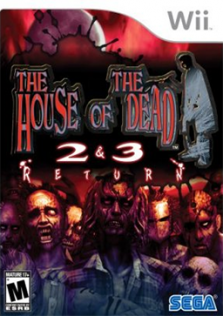
by Brian LeTendre
The House of the Dead series is by far my favorite light-gun series of all time, and I have fond memories of the games in both the arcade and on consoles. I’m really psyched for the release of House of the Dead: Overkill, so I decided to spend some time with House of the Dead 2 &3 Return for the Wii.
Porting light-gun games to the Wii is a no-brainer, and five minutes into HOTD 2, I was having as much fun as I did in the arcade back in the day. For those that aren’t familiar with the HOTD series, they rail shooters, which means you are basically a camera with a gun attached to it. The game controls how you move through the levels, and you just point and shoot. The Wii controls are perfect for this, as you use the trigger to shoot, and you just point off screen to reload. I thought the targeting worked fine, and I actually found controls worked better than in the arcade, as you can reload much faster.
The story in both games has you as an agent of the AMS, fighting armies of the undead. Most of the undead can be traced back to experiments by a mad scientist named Dr. Curien in the first HOTD game. Story is not really a strongpoint of the series, and the voice acting is absolutely horrendous, I mean laughably bad. When running from zombies, civilians say things like “No…don’t come!” Lines of dialogue that are supposed to be threatening are spoken as questions (“Suffer like G did?”), and in general, everything is stilted and poorly delivered. This just adds to the camp of the game, and makes me enjoy the series even more.
Graphics in both games look pretty much like the did in the original games, which means they’re a little outdated now. The gameplay still holds up though, and the offline co-op is really fun, as you can blast away with a buddy and laugh your way through together. That’s also the only way you are likely to finish the game, as you have a limited amount of continues and it’s very hard. The more you play through the levels, however, the more you’ll recognize the patterns and be able to get a little farther each time.
House of the Dead 2 & 3 Return is a great port of two very fun arcade games, and having them together on one disc is fantastic. If you’ve got someone else to play with, this is a must-have for your Wii library, and even if you don’t, but you’ll have plenty of fun on your own as well.
4 out of 5 G’s
2-1-09: Vericon 2009 Report
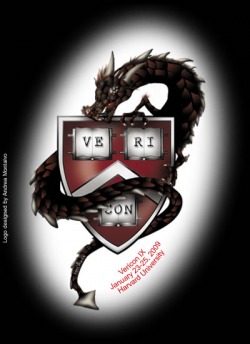
by Max Saltonstall
I am still sore from the festivities, and just had a very good time up in Cambridge this past weekend with the past and present members of the Harvard Radcliffe Science Fiction Association. Thanks to the con staff who helped me have so much fun!
Friday I arrived early enough to meet some of the folks setting up, help out a bit with the program book assembly and find out who was involved with what. They were kind enough to move my events around to allow me to participate in some events I was very much looking forward to, including the LARP that night.
The Tale and the Twilight, written by HRSFA alumni who have done a series of similar LARPs, told a tale of heroes seeking to marry the daughters of the sultan through gaining favor and telling stories. I missed the window to sign up as a player and instead got the opportunity to know more behind-the-scenes info as an NPC (the Captain of the Guard). The group contained all sorts and though the game ran long it was very fun. Each character had some special qualities, motives, interlocking agendas and ways to help or hinder others. I highly recommend trying one of these LARPs if you get the chance, I enjoyed the evening very much.
Saturday morning (most convention events start at 10 or 11 am, not too early) I finally realized my efforts to play Capture the Flag with Stuff (tm), another famous and exotic HRSFA standby. Imagine an indoor, three team game of Capture the Flag with magical wands, potions, belts and glyphs. We got a good turnout and diverse players, some experienced and other brand new like me. The two games wore me out and proved much more fun than any Capture the Flag game I've ever played. The items almost got confusing when a few were interacting at once, but the expert players and the judge made sure that we all had good instruction.
After coming down from the adrenaline high of running up and down stairs for two hours I found some food and then ran Go West, a one-shot Dogs in the Vineyard module adapted from a home campaign I ran. The secret agents of the United States Geological Survey put a stop to the strange tax evasion and the mysterious missing persons, almost suffering a casualty themselves. The big tough farm girl got in some trouble, but she was saved by the faith healer and monkey. A very fun session, all pretty new to the system but getting the hang of things quickly enough.
The Dogs game went longer than intended thanks to players getting into the story and helping craft a collaborative narrative that rocked. We ended as some other events were starting up for the evening, and so I got some food and settled down to play some Race for the Galaxy. My goal for the evening: experiment with the first expansion to the game, since I already loved Race. After a few games I concluded that the expansion cards are useful to fill out some gaps and the goals added provide very nifty incentives to motivate different styles of play. I know have my own expansion in the mail from boardsandbits.com.
Sunday's main event drew a big crowd as folks woke up and filtered in. MST3K focused on “National Treasure 2” this year, a whopper of a film with enough mediocre acting and writing to provide much amusement. The script our three hosts had written kept us laughing, as did their clever (and minimalistic) sketches that helped fully mock the plot holes and weird leaps of logic. The movie was never better than in that crowded classroom.
Lunch with some friends, new and old, capped off my weekend and I got on a long Amtrak train back to the Have'. I am very glad my friends finally got me to go to VeriCon and I will be back next year to repeat the awesome events.
1-30-09: Prince of Persia Review (XBox 360)
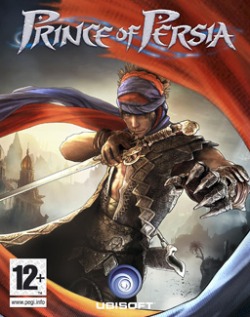
by Brian LeTendre
Prince of Persia (PoP) does an excellent job of capturing the best parts of the series and combining them with a unique visual style to breathe new life into a series that had gotten a little stale.
The story in PoP involves a brand new Prince, who is returning from his latest adventure. He loses the donkey that is carrying all of his treasure, so he’s wandering around searching for it when happens to stumble into a young princess who is on the run from some goons. As often happens when you are a swashbuckling young rogue, the Prince gets caught up in a conflict that could decide the fate of the world. He must join forces with princess Elika to cleanse the land of the corruption that threatens to consume it.
PoP has an open world quality to it, and players can choose to explore the different locations in whatever order they choose. Each area consists of platforming and puzzle solving, culminating with a boss fight. As you clear out an area and free it from corruption, the land reverts to its normal state and a bunch of energy orbs are left place of the corruption. Elika needs these orbs to keep her energy up and to unlock new areas to explore.
Built on the Assassin’s Creed engine, PoP sports a streamlined control scheme that favors constant motion and fluid combat without a lot of complex button mashing. As you run along walls and soar through the air, well-timed button pushes create an almost seamless sense of movement. Combat is mostly one on one, and again the stress is on well-timed, one-button actions. The simple nature of the controls helps to keep the game moving forward constantly.
Another element that keeps things moving forward is the Prince’s partner Elika. Rather than being the girl you have to save at the end of the game, she’s a powerful ally that accompanies you along the way. Every time the Prince misses a jump or falls off a ledge, Elika is there to grab him and return him to safety. She can also aid the Prince in combat and can act as a compass to highlight the most appropriate path to a new location. Conversing with Elika throughout the game reveals a great deal more of the story, and makes her feel like a true companion, as opposed to just an AI-controlled ally.
What I like most about PoP is that the game wants you to succeed. The controls, the storytelling and the open world nature of the game all combine to let you set the pace of the game, and explore the story as much or as little as you want to. No matter what your choices are, the game tries to keep things moving and keep you immersed.
My only real complaint is that the collection of energy orbs feels a little unnecessary and repetitive. It’s almost as if the developers felt like they didn’t have enough game, so they figured out a way to make you have to go through each level twice. I think the game would have been better off without it.
All in all, Price of Persia is a great game, and I’d really like to see Ubisoft use this blueprint as the series moves forward.
4 out of 5 Lost Donkeys
1-28-09: Gears of War 2 Review (XBox 360)
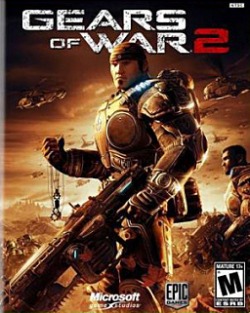
by Brian LeTendre
Gears of War 2 is exactly what a good sequel should be: everything that the original was times two. From the graphics to the scope to the story, Gears 2 delivers a very polished experience that surpasses the original in every way.
For those unfamiliar with Gears, the themes of humanity fighting for survival against an alien-type species pretty much sums up the core concept. What’s different in Gears 2 however, is that writer Josh Ortega manages to add some depth to main character Marcus Fenix and the supporting cast, which was almost completely absent in the original game. He gives us something to care about, like the subplot of Dom searching for his lost wife, who was captured by the Locust. There’s also a civil war brewing among the Locust that makes them seem more than one dimensional bots, and gives a reason for why they’ve attacked the surface world.
Story aside, where Gears 1 established itself as a blockbuster was with its solid gameplay and beautiful graphics. Gears 2 raises the bar on both counts. It’s easily the best looking game on any next-gen console, which is amazing when you see the depth and scope of some of the levels. Camera effects that blur objects in the foreground and background; particles of debris floating around; it’s visually stunning. The “stop and pop” gameplay is largely unchanged from the first game, except that getting out of cover feels a lot easier than it did the last time around. There’s a good variety of weapons, and the ability to use fallen enemies as “meat shields” is a nice bonus.
I did not get a chance to really put the multiplayer through its paces, but I have played some of the new “Horde” mode, and it’s great. You and up to four friends pick a map and defend it from increasingly difficult waves of enemies. It’s like “Call of Duty: World at War’s” zombie mode, but much, much better. I also played some of the campaign co-op, and while Epic failed to deliver the promised 4-player experience, the 2-player version is still a lot of fun.
Gears of War 2 lives up to the hype of being one of the best games out there on any platform. Highly recommended.
5 out of 5 Lancers
**For anyone interested in the Gears of War comic that ties into the game, you can check out the interview I did with writer Josh Ortega over at CBR by clicking here.
